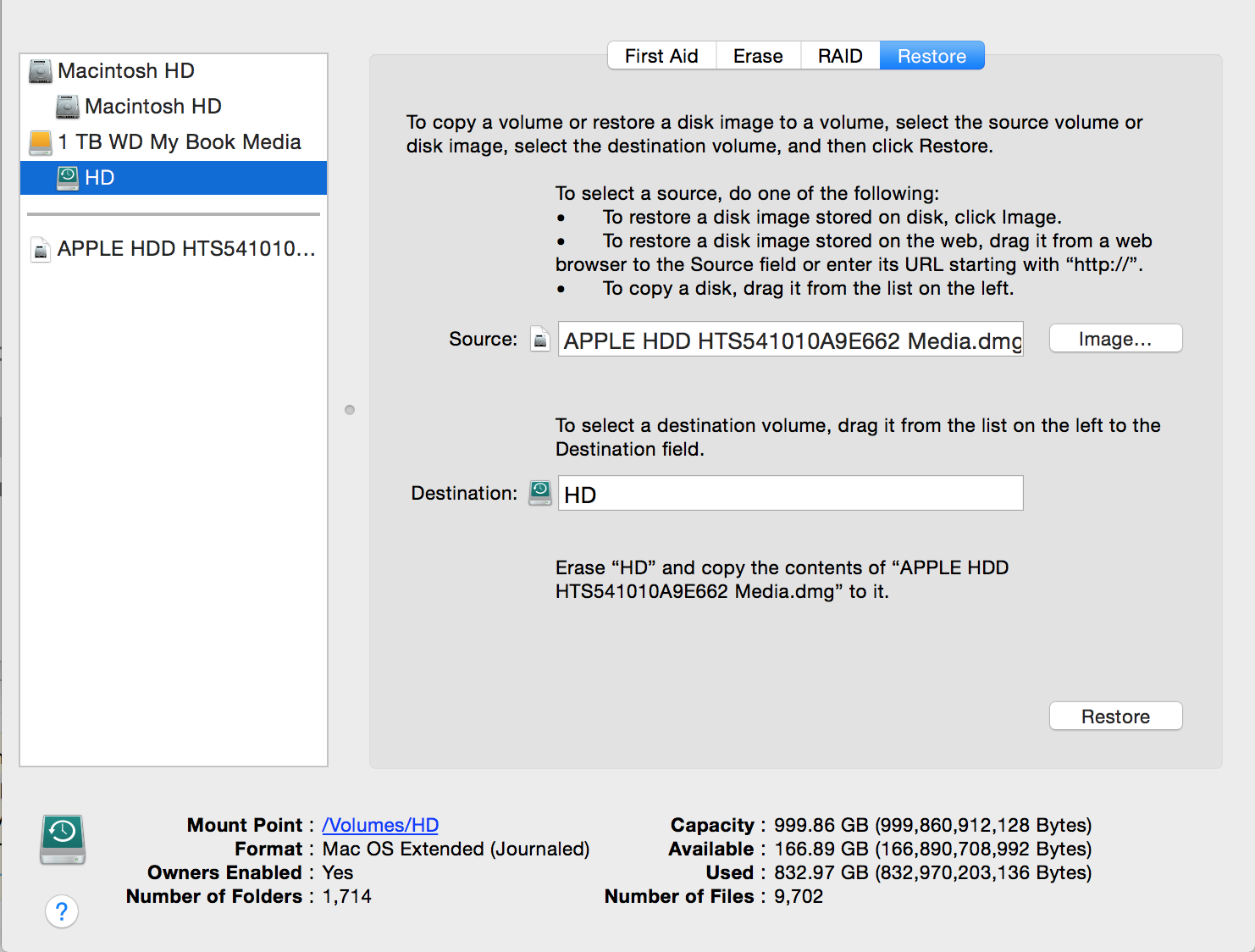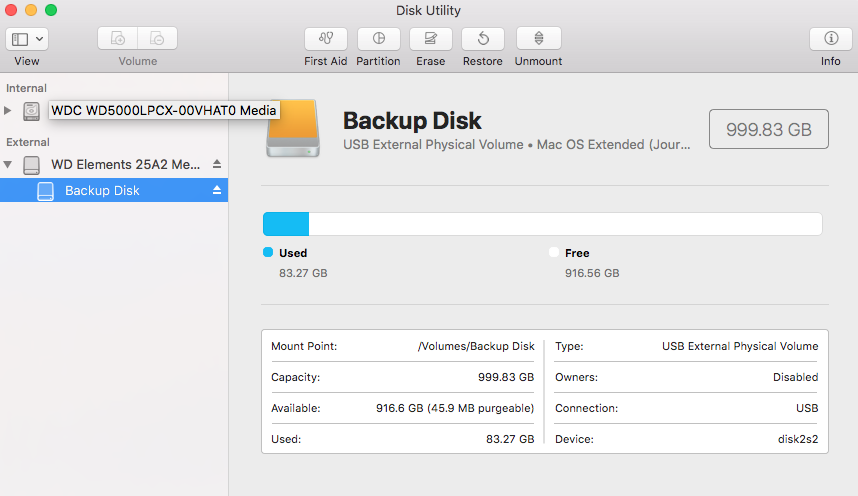

- #Could not unmount disk osx how to#
- #Could not unmount disk osx drivers#
- #Could not unmount disk osx full#
- #Could not unmount disk osx pro#
- #Could not unmount disk osx password#
I’m very grateful to Andy Ihnatko for reminding me of this use of lsof and to hhanche for pointing out that you don’t need to grep at all. Unfortunately, it currently doesn’t distinguish between real volumes and snapshots although that can have its advantages, it does make it messy to select the volume you want to check. Most importantly, if you click its padlock at the lower right and authenticate, it will show all processes running as root. Although it’s not notarized, it does everything that I’d want in terms of matching lsof or fuser’s features. My personal favourite of them all is Sloth, from here.

Thank you to everyone who has suggested alternatives, particularly apps. With a bit of luck, these should provide sufficient clues as to what’s preventing ejection, thus what you can do about it.
#Could not unmount disk osx full#
the full path to the file or directory.the type, DIR meaning directory, and REG meaning a regular file.33 r is opened for read access only, while 35 u is opened for read and write access the open mode, as the single character following two digits, e.g.an abbreviated name of the command associated, here mds, the Spotlight metadata server.The information given about each open file contains, from the left: This needs to be run using sudo, as otherwise you won’t see any files which are opened by processes running as root, which are most often the offenders.īut lsof is capable of doing its own filtering. Which are the files and directories open on that volume. Mds 100 root 33r DIR 1,38 192 2 /Volumes/External2
#Could not unmount disk osx password#
Once you’ve entered that, type your admin user password at the prompt, and you’ll see a list with entries like To discover which files are open on any volume, use the command Don’t just pull the cable of an external disk: not only will your Mac complain, but you could end up damaging the contents of that file, or even the file system on that volume. What you really want to know is which file(s) are open on the volume, so you have a clue as to what to quit to enable the volume to be ejected cleanly. When it has occurred in the Finder, solutions are harder to come by. It’s also worth double-checking the volume that you’re trying to run First Aid on: if it’s one of the current boot volume group, System or Data, then you’re probably better off doing this in Recovery mode anyway. This seems to be improving steadily, and less likely to occur in Big Sur than Catalina, for example. It’s unusual for this not to work at all, although it may take a couple of attempts. In Disk Utility, the answer seems to be to try again, several times if necessary. Not only can you encounter this in the Finder, but it can also prevent running First Aid in Disk Utility, which may report that it couldn’t because it was unable to unmount the volume you want checked.
#Could not unmount disk osx how to#
How to erase and install Snow Leopard 10.Among the rough edges in macOS is that infuriating message you may see when you try to eject or unmount a volume: it failed because the volume is in use. Since your issue appears on three drives, either there is a problem with the machine/cable or perhaps a bad 10.6 disk or wrong methods being used each time. Don't format the drives on the iMac unless it's also 10.6.
#Could not unmount disk osx drivers#
You can force unmount a drive in Terminal.Īre you using the 10.6 white retail disk? Because that's what you need to boot/use on the 2009 MBP, not the iMac's 10.6 disk as those contain machine specific drivers for the iMac only. So have Spotlight ignore everything, turn it off basically. If you have the drives hooked up to the iMac, Spotlight might be trying to index them thus they can't be unmounted. The computer is late 2009 Intel MacBook Pro.

I did all repairs using a separate iMac's Disk Utility. I cannot repair, partition, or erase any drive: Could Not Unmount Disk error on the computer using Disk Utility. This rebuilds the GUID and EFI so it's for 10.6 version and removes all partitions on the drive, including the hidden RecoveryHD partition. I assume you have used the 10.6 Disk Utiltiy and selected the ENTIRE drive, format Option: MBR and MSDOS, then click Erase and Security Option Zero All Data, and then go back to Partition 1: Option GUID and Format: OS X Extended J? I have zeroed out one hard drive using Disk Utility and I continue to get failed install.
#Could not unmount disk osx pro#
I have tried 3 different hard drives that have all been used in this MacBook Pro and all installed with Mountain Lion. Hold the option/alt key at boot gives Startup Manager, which you then can select a new/other OS to boot from and set it as the startup disk in System Preferences. The computer stopped responding and after a restart I got a gray screen with a folder and ?.Īll that says is the firmware can't find the bootable OS it was assigned to.


 0 kommentar(er)
0 kommentar(er)
